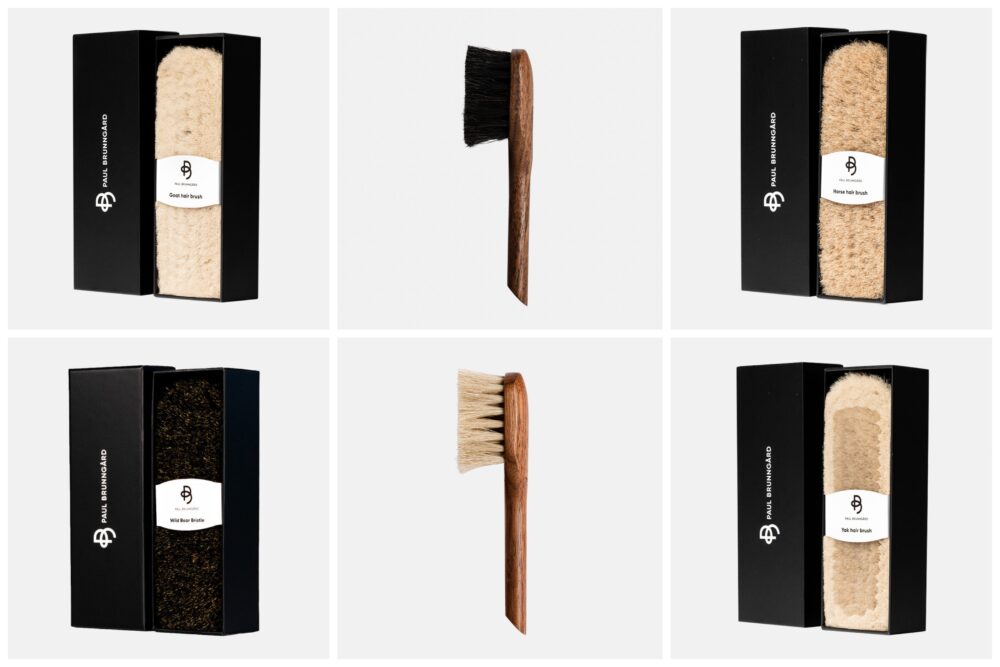

When I first got into shoe care, the only brush I knew was the classic horsehair. Anything beyond that felt like expert-level stuff. In fact, even when I was considered a “shoe shine expert,” I still relied solely on horsehair brushes. But times have changed. In this shoe brush guide, we will look at today’s most common brushes and their uses.
Thanks to brands like Paul Brunngard, the market now offers a range of shoe brush types that cater to different stages of care and different types of shoes. They recently sent me their full lineup—boar, horse, goat, and yak hair brushes—and I’ve had the pleasure of testing them all. In this shoe brush guide (and in the video below), I break down what I’ve learned so you can make the best brush choices for your routine.
🎥 Watch the Breakdown
👉 Click here to watch the video on YouTube
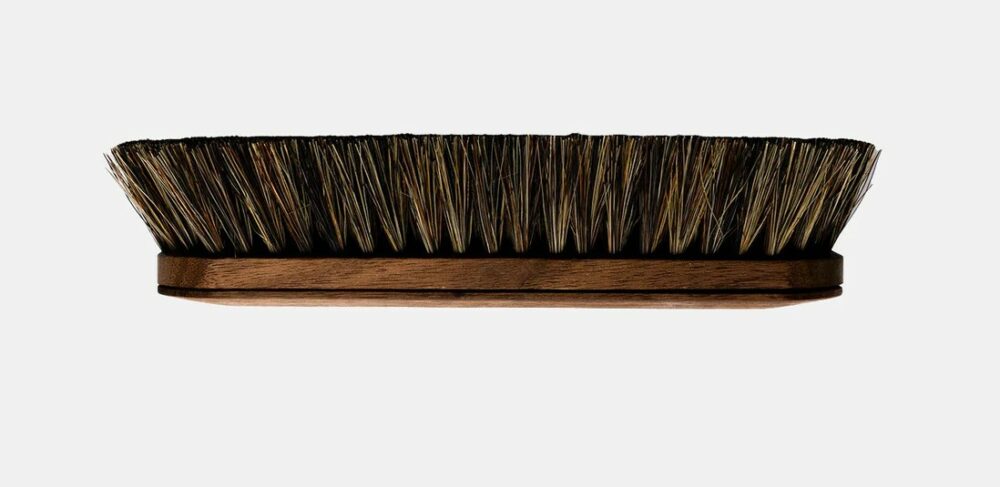

1. The Cleaning Brush – Boar Hair
Let’s start with the most rugged of them all: the boar bristle brush. This one’s tough, stiff, and built for deep cleaning. If you’ve got boots caked with dried mud or shoes covered in grime, the boar brush gets in there and lifts it out—especially around hard-to-reach areas like the welt.
I’d recommend this for those who live in wet or muddy climates, or anyone who needs to give their footwear a proper scrub now and then. It’s aggressive, so not ideal for shine work—but that’s not its job.
Learn more about this brush here
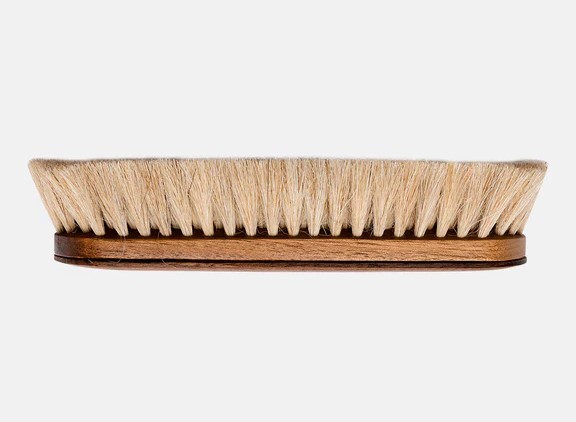

2. The All-Arounder – Horsehair Brush
The horsehair brush is the one most people know—and for good reason. It’s that in-between brush that can handle both cleaning and shining, although it doesn’t truly excel at either.
If you only want one brush in your kit, horsehair is your best bet. But keep in mind, they often come a bit stiff and need to be broken in. Over time, they soften and become more versatile. Think of it as your everyday workhorse—pun intended.


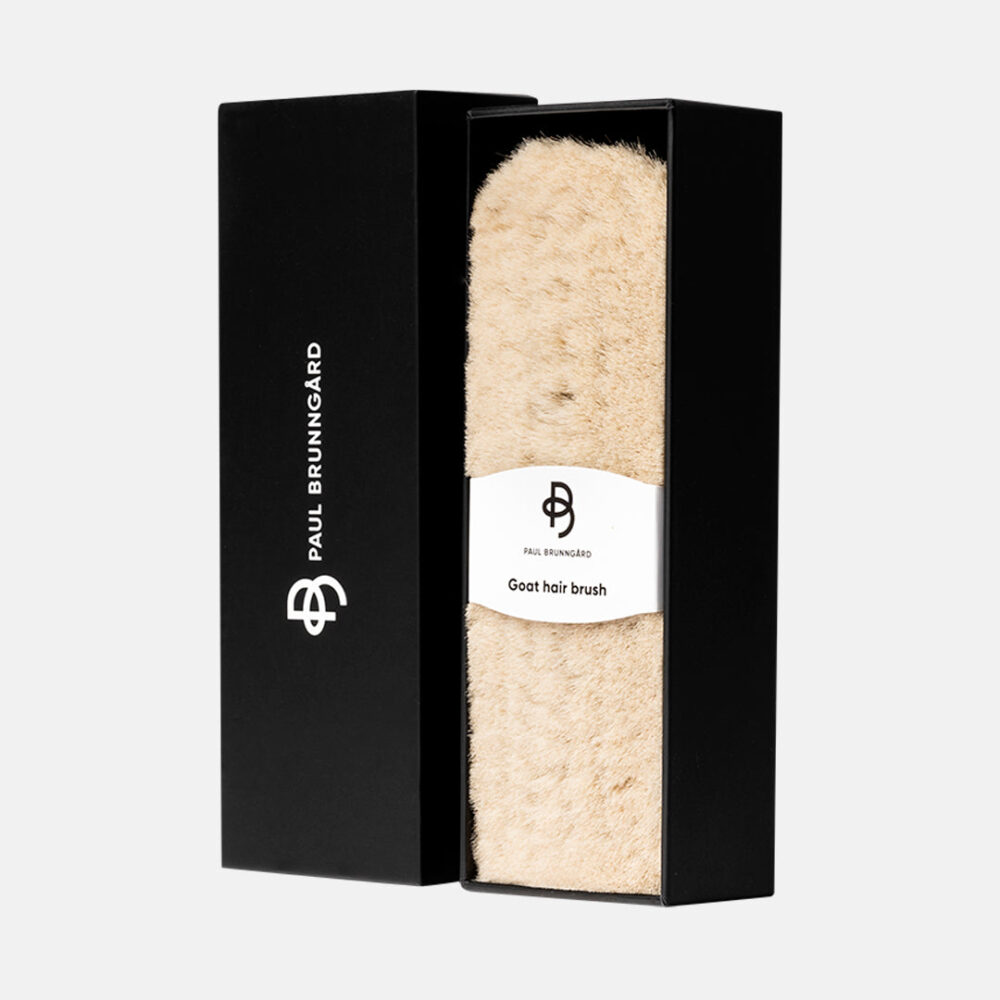

3. The Shine Starter – Goat Hair
Moving into shine territory, the goat hair brush is where things start to elevate. These bristles are finer and softer than horsehair, and they help bring out a shine without stripping away wax or polish.
Goat hair is great for removing dust or lightly buffing up a shoe before heading out. It won’t ruin your polish job—in fact, it enhances it. I like to think of this one as the “all-day shine companion.”


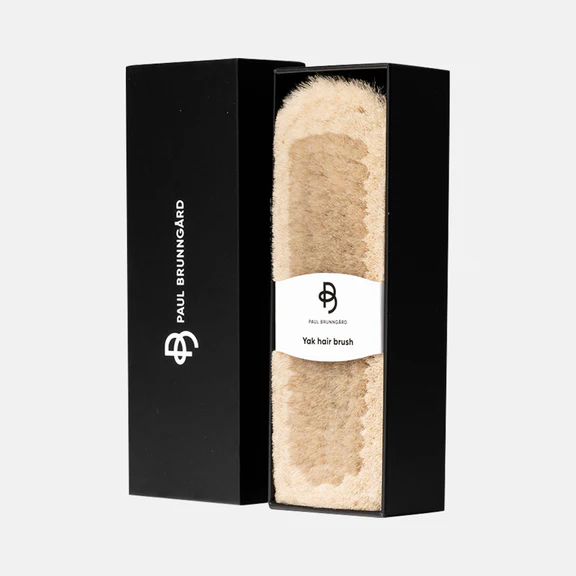

4. The Luxury Finisher – Yak Hair
Last but certainly not least is the yak hair brush—the softest and most luxurious of the lineup. I personally use mine for lighter-colored shoes (just to help keep things organized), but the real draw here is how gentle and fine the bristles are.
The yak brush doesn’t disturb your polish. Instead, it pushes the wax deeper into the pores of the leather and creates a more uniform, even shine. If you’re chasing that elevated, high-gloss finish, this is the brush to reach for.
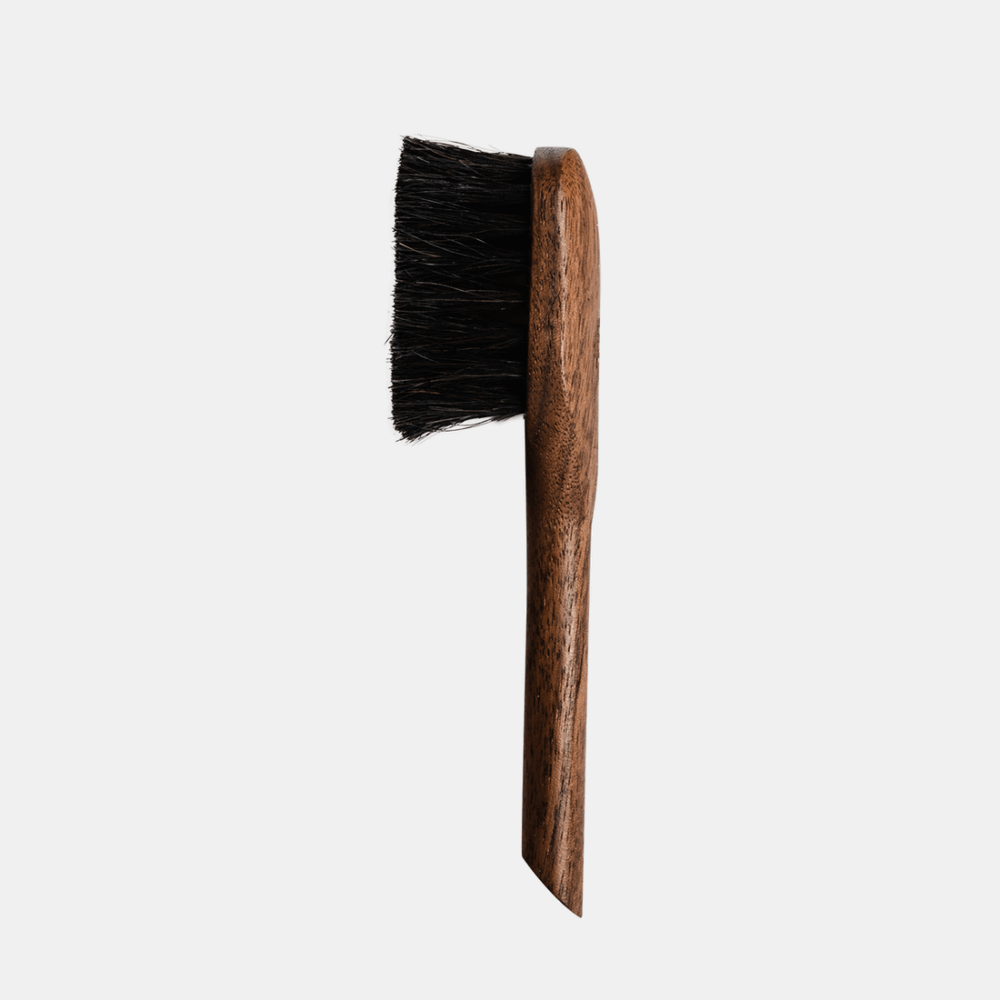

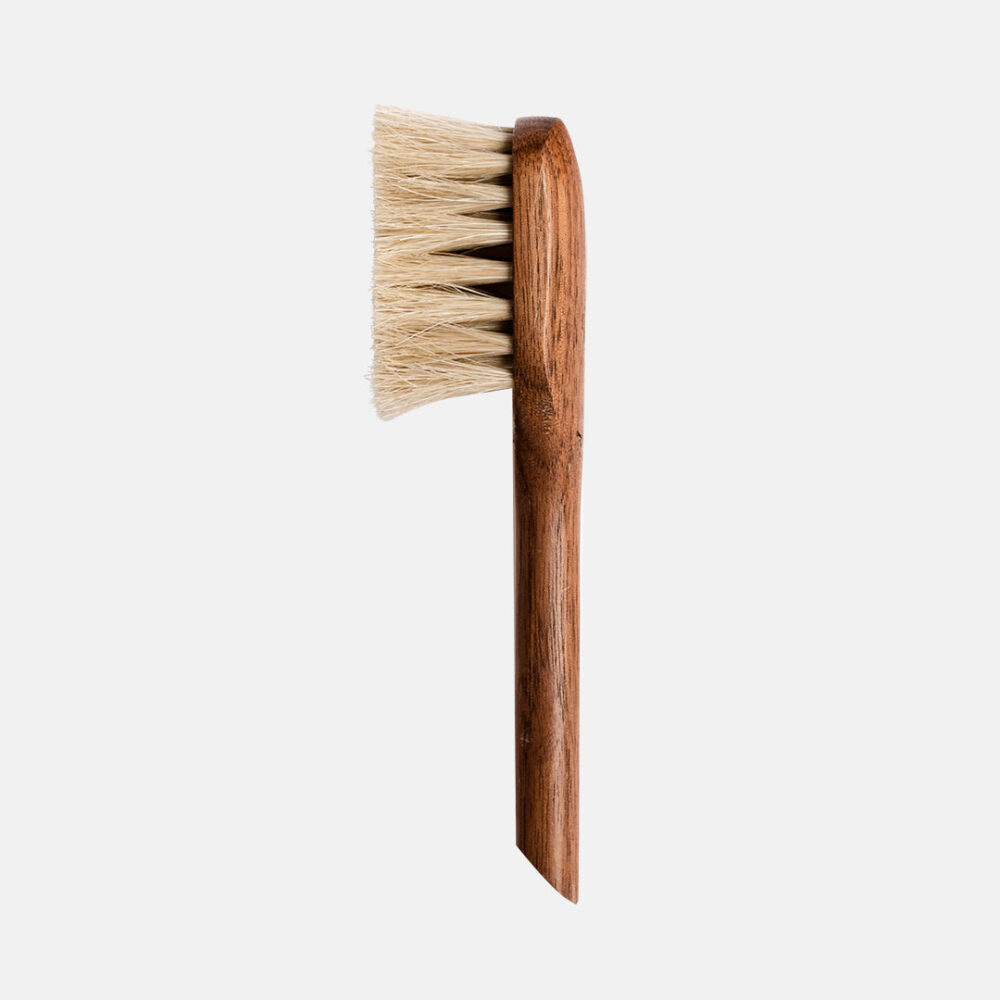

5. The Applicator Dauber – Precision Product Placement
One last brush worth mentioning is the applicator dauber—a small, round brush typically made with horsehair. While it’s not meant for buffing or shining, it plays a key role in applying creams or polishes with control and precision.
Dauber brushes are perfect for getting into tight areas—like around the welt, eyelets, or brogue perforations—without making a mess. You dip the dauber directly into the product and apply it to the shoe in small circular motions. It’s cleaner and more efficient than using a cloth, and it helps avoid overapplying polish.
I always recommend having a few of these on hand—especially one for each color family (black, brown, neutral)—to prevent cross-contamination.
I hope that you have enjoyed this shoe brush guide and that it has helped you gain a better grasp of the choices. As customers, we now have more shoe brush options than ever, and more companies are offering the entire collection to help you with your shoe care needs.
I use the brushes by Paul Brunngard. Read more about that company here.
Learn more about these brushes: https://arterton.co.uk/paul_brunngard_tss
—Justin FitzPatrick, The Shoe Snob
Shop · Marketplace · J.FitzPatrick Footwear · Patreon
*** Please note: Paul Brunngard is a sponsor of The Shoe Snob Blog and this can be considered a sponsored post***









